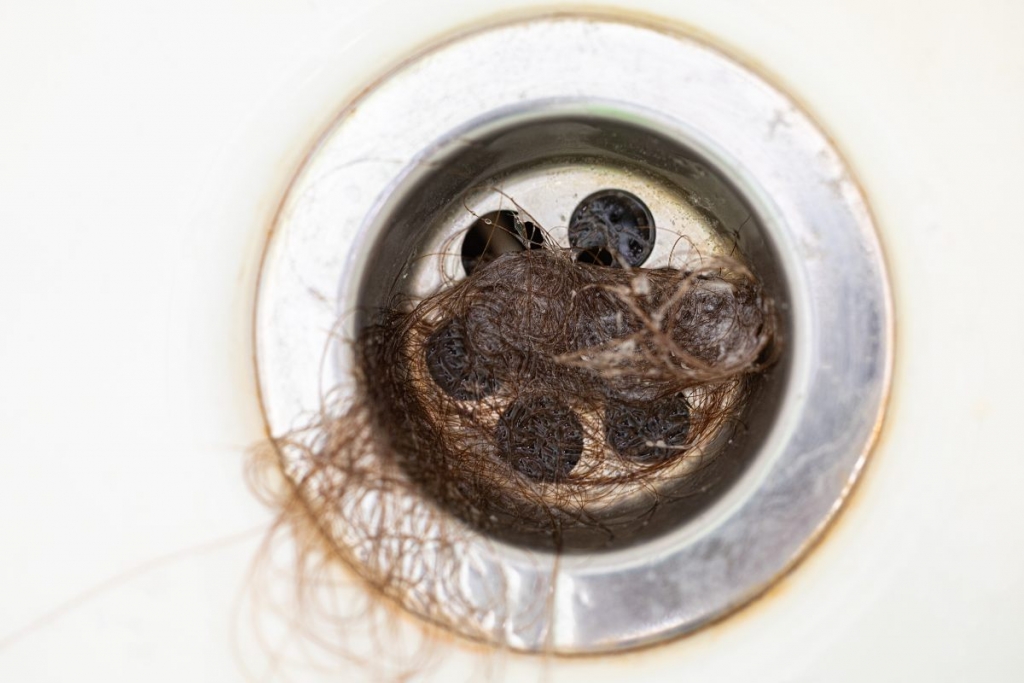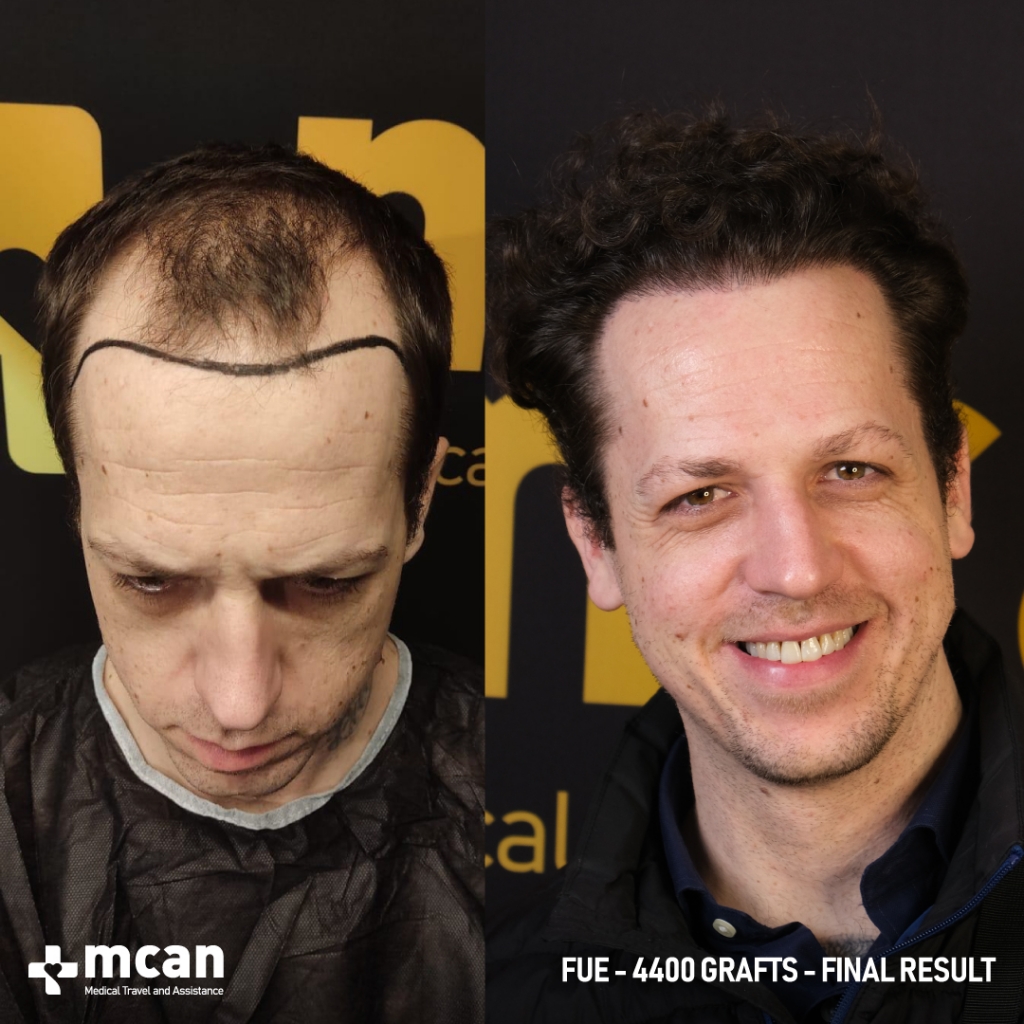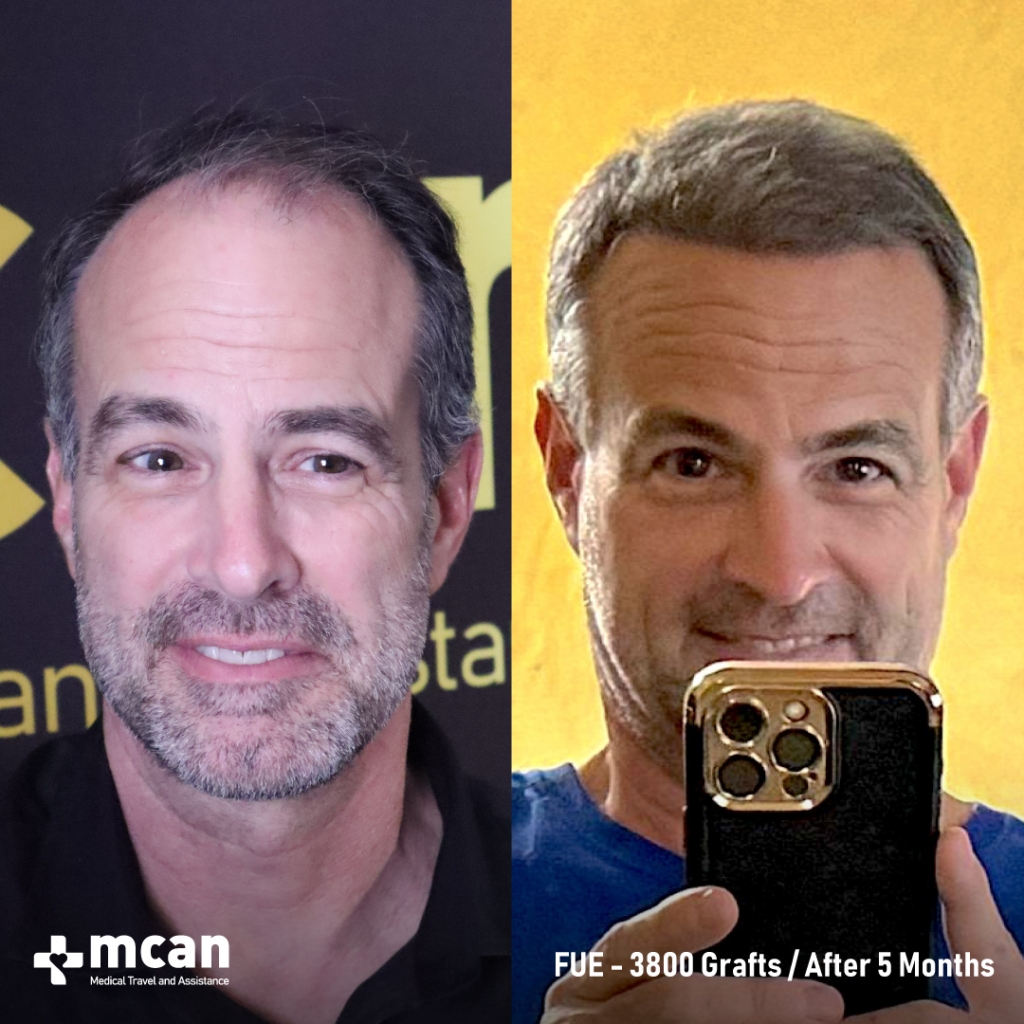
It’s one of the most common worries people have: you’re in the shower, running your fingers through your hair, and notice several strands gathering near the drain. The immediate question follows; is this normal, or am I losing my hair?
The truth is, shedding hair in the shower is a natural part of your hair’s renewal process. Every strand on your scalp goes through a continuous growth cycle, meaning some hairs are always reaching the end of their life and falling out to make way for new ones. However, there’s a fine line between healthy shedding and early signs of hair loss.
Knowing how much hair fall is normal in the shower and what patterns may indicate a problem is key to protecting your long-term hair health. Understanding the difference between natural shedding, temporary stress-related hair loss, and early genetic thinning can help you take the right steps before visible changes occur.
In this article, we’ll explain how much hair loss is considered normal during washing, what causes increased shedding, and when it might be time to seek professional evaluation or treatment. By the end, you’ll have a clear picture of what’s normal, what’s not, and what you can do to maintain a healthy, full head of hair.
The Hair Growth Cycle and Why Shedding Happens
Before worrying about how much hair you’re losing in the shower, it’s important to understand what’s actually happening beneath the surface of your scalp. Every strand of hair follows a repeating cycle of growth, rest, and shedding. On any given day, you have thousands of hairs at different stages of this cycle which is why shedding is a completely normal process.
Here’s how it works:
- Anagen (Growth Phase): This is the active growth stage where your hair follicles are producing new strands. It lasts anywhere from 2 to 7 years and determines the maximum length your hair can grow. About 85–90% of your scalp hairs are in this phase at any given time.
- Catagen (Transition Phase): This short phase, lasting 2–3 weeks, marks the end of active growth. The hair follicle begins to shrink and detach from its blood supply, preparing to rest.
- Telogen (Resting Phase): During this phase, which lasts around 3–4 months, the hair strand is no longer growing but remains anchored in the scalp while a new hair starts to form beneath it.
- Exogen (Shedding Phase): Finally, the old hair falls out to make room for the new one. This is the hair you typically see collecting in your shower drain or hairbrush.
Since these phases are always cycling, losing 50 to 100 strands of hair per day is considered normal. For some people with thicker or longer hair, shedding may appear more noticeable, especially after shampooing or brushing, but that doesn’t necessarily mean it’s excessive.

How Much Hair Loss is Normal in the Shower?
It’s completely natural to see hair strands collecting near the drain or on your hands while washing your hair. What often feels alarming is actually a normal part of the hair growth cycle. The key is understanding how much shedding is within a healthy range and when it might suggest something more.

On average, most people lose between 50 and 100 hairs per day. During a shower, especially if you wash your hair every two or three days, it’s normal to notice a concentrated amount falling out at once. That’s because the hairs that would have shed gradually over those days are simply being released all at once while shampooing and rinsing.
However, this range can vary significantly based on individual factors, including:
- Hair Length and Washing Frequency: People who wash their hair less often often notice more strands during showering. The hair that would have naturally fallen out over several days comes loose all at once.
- Hair Texture and Styling Habits: Curly or coarse hair tends to trap loose strands, releasing them during washing or brushing. In contrast, straight hair sheds more visibly each day.
- Gender and Hormonal Balance: Women may notice increased shedding due to hormonal changes such as postpartum shifts, menopause, or birth control adjustments. Men may see steady shedding if they’re in the early stages of androgenetic alopecia (pattern baldness).
- Seasonal and Environmental Changes: Slightly higher hair shedding can occur in late summer or fall, known as “seasonal shedding.” This is a temporary and natural cycle.
What’s Normal vs. What’s Not
- Normal: A few dozen strands in your hands, comb, or drain, especially after a couple of days without washing.
- Potentially Excessive: Handfuls of hair coming out with every shower, or visible thinning at the crown, temples, or part line.
Consistent handfuls of hair after each wash or noticeable scalp visibility may indicate the early stages of conditions like telogen effluvium or pattern hair loss. Our guide, Hair Transplant Success: The Key Elements Behind a Great Result, explains how identifying these changes early can make a major difference in long-term outcomes.
Self-Assessment Tips to Track Hair Shedding
Noticing hair fall during a shower can easily spark worry, but before assuming it’s excessive, it helps to measure and understand your actual shedding pattern. Tracking your hair loss through consistent observation is one of the most reliable ways to distinguish normal shedding from early signs of a problem. Below are simple yet effective self-assessment methods you can use at home or alongside professional evaluation.
1. The Daily Comb Test
This test helps you understand your baseline level of shedding. Using a clean, wide-tooth comb, gently brush your dry hair from root to tip once a day over a light surface such as a white towel or countertop. Count the number of strands that come loose.

If you typically see around 10 to 20 hairs, that’s perfectly normal. However, if you consistently find 50 or more hairs every day for several weeks, it may signal increased shedding that deserves closer attention. Remember, the goal isn’t to count obsessively but to observe trends over time.
2. Observing Hair in the Shower Drain
Many people first notice shedding when rinsing shampoo or conditioner and seeing hair collect around the drain. Occasional loose strands after washing are completely normal, especially if you haven’t brushed your hair for a few days. Those hairs were likely already shed and simply released by massaging or rinsing.
However, if you find clumps of hair in the drain after every shower, or if cleaning the drain becomes a frequent necessity, this could point to excessive shedding. Keeping a mental note or even photographing what you see occasionally can help track whether the amount is increasing over time.
3. Tracking with Photos
Photographic tracking is one of the most practical ways to identify gradual hair changes. Take clear pictures of your hairline, temples, and crown every few weeks under consistent lighting. This visual record can reveal subtle thinning or widening of part lines that may not be obvious in daily mirrors.
This approach is particularly helpful for observing the crown area, where hair loss can develop slowly. For more on this topic, you can refer to Crown Hair Transplant: Causes of Balding Crown and Treatment Options, which explains how crown thinning differs from regular shedding and how it’s evaluated clinically.
4. Scalp Density and Part-Line Check
Under natural or bright light, gently part your hair in several areas across the scalp at the center, sides, and back. If you begin to notice more visible scalp, wider part lines, or uneven thickness between sections, this could indicate a reduction in density rather than typical hair turnover.
It’s important to compare these observations with older photos if possible. Stable density usually means you’re experiencing normal shedding, whereas progressive scalp visibility may hint at androgenetic alopecia or telogen effluvium, both of which can start subtly.
5. Professional Scalp and Follicle Analysis
If home methods leave you uncertain, a professional scalp analysis provides definitive answers. Clinics specializing in hair restoration use digital trichoscopy providing high-resolution imaging that measures follicle health, density, and miniaturization. This allows specialists to identify whether you’re shedding healthy, mature hairs (normal) or miniaturized, weakened ones (early hair loss).
Such detailed evaluation can also determine whether non-surgical treatments or medical interventions might help prevent further loss and maintain long-term density.
When Hair Loss Requires Professional Treatment
Occasional hair shedding in the shower is normal, but when it becomes excessive or persistent, it may be time to seek professional advice. Identifying when to move from self-care to medical consultation can make a major difference in preserving hair density and preventing long-term loss.
Here’s when professional evaluation becomes crucial:
- You’re losing more hair than usual for several weeks: If you consistently notice handfuls of hair after washing or brushing, far beyond the typical 50–100 strands per day, it could indicate a medical condition such as telogen effluvium or early androgenetic alopecia.
- Your scalp is becoming more visible: A widening part line, visible crown, or reduced volume at the temples are early signs that shedding has transitioned into patterned hair loss. These signs are often subtle at first but progress over time without intervention.
- You see patchy or sudden hair loss: Localized bald patches can suggest autoimmune conditions like alopecia areata or fungal scalp infections that require targeted treatment.
- You’ve noticed consistent thinning despite good care: Even with gentle washing, proper nutrition, and minimal styling damage, if hair continues to thin, it’s time for a dermatologist or hair restoration specialist to assess deeper causes.
- There’s a strong family history of baldness: Genetics play a dominant role in pattern hair loss. If male or female relatives experienced early or significant thinning, preventive medical treatments can help slow the process before it becomes advanced.
The Role of Experts in Hair Restoration
Once underlying causes are identified, specialists can recommend the most effective options from medical management to advanced procedures:
- Medical Treatments: Medications such as minoxidil and finasteride remain the first-line therapy for many patients, helping to slow or partially reverse thinning.
- Regenerative Therapies: PRP (Platelet-Rich Plasma) or mesotherapy can enhance follicle strength and improve scalp circulation.
- Surgical Restoration: When significant thinning or baldness has already occurred, a hair transplant offers the most lasting and natural solution.
For a deeper understanding of how timing and hair quality affect recovery, you can explore Hair Transplant Timeline: A Guide to Hair Transplant Recovery & Growth Chart, which outlines what to expect from early growth to full maturity.
Hair Transplant in Turkey for Advanced Hair Loss with MCAN Health
When everyday shedding begins to evolve into visible thinning or bald areas, taking timely, expert-guided action is crucial. At MCAN Health, we understand that hair loss isn’t just a cosmetic concern. Our goal is to help you regain both your hair and your confidence through a personalized, medically advanced approach.


When you choose MCAN Health for your hair transplant in Turkey, you benefit from:
- Comprehensive diagnosis and planning: Every treatment begins with a detailed assessment of your hair loss pattern, scalp condition, and long-term goals to ensure the most effective strategy.
- Advanced surgical techniques: Our specialists perform procedures using state-of-the-art FUE, Sapphire FUE, and DHI methods, ensuring maximum graft survival, minimal scarring, and natural-looking density.
- All-inclusive international care: From airport pickup and luxury accommodation to post-operative follow-up and 24/7 multilingual support, we handle every detail for a stress-free experience.
- Ethical, results-driven practice: We emphasize realistic expectations, donor area protection, and sustainable outcomes that stand the test of time.
At MCAN Health, we combine Turkey’s global reputation for hair restoration excellence with compassionate, individualized care. Whether you’re addressing gradual thinning, diffuse shedding, or advanced hair loss, our expert team is here to design a solution that looks natural, feels authentic, and lasts for years to come.
 Why is Hair Transplant Cheap in Turkey?
Why is Hair Transplant Cheap in Turkey?  Hair Transplant Donor Area: Why It’s Critical for Natural and Lasting Results
Hair Transplant Donor Area: Why It’s Critical for Natural and Lasting Results  Hair Transplant Success: The Key Elements Behind a Great Result
Hair Transplant Success: The Key Elements Behind a Great Result